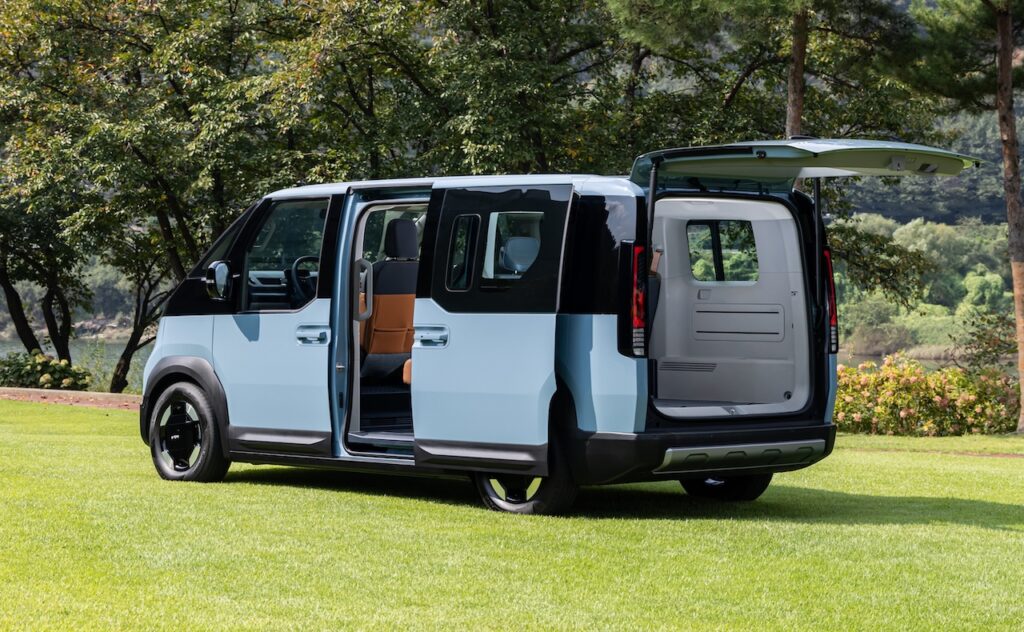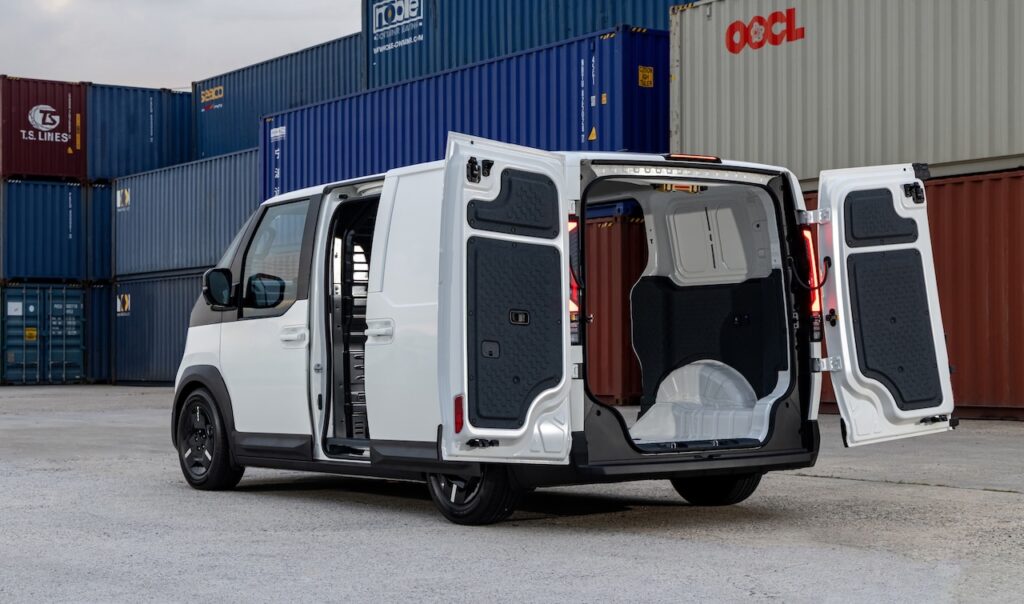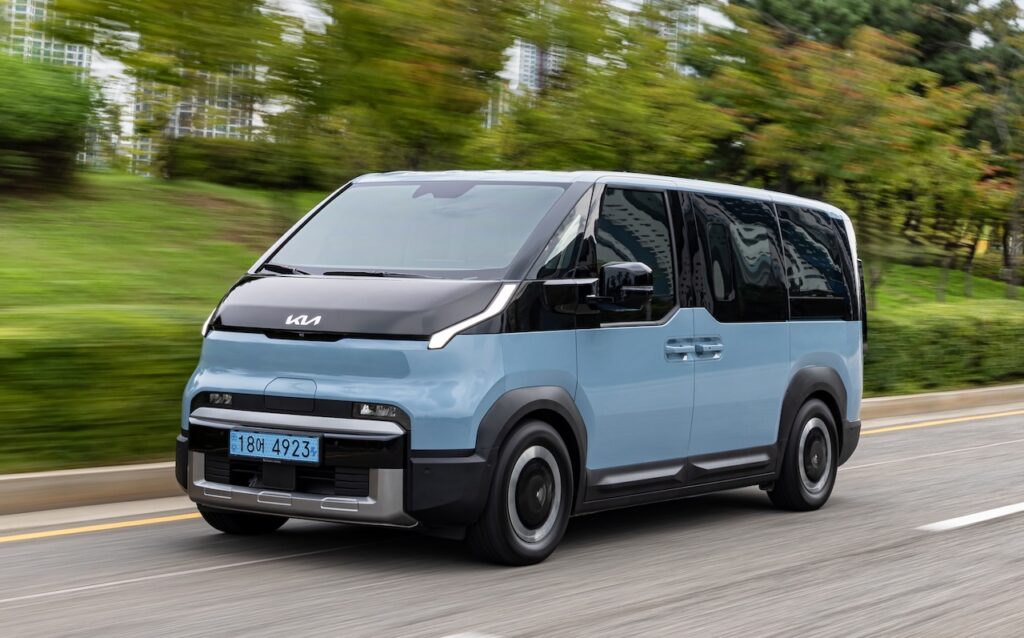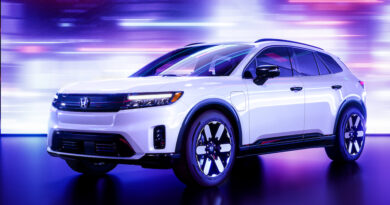Confirmed: Radical electric Kia PV5 people mover and cargo van coming to Australia. Ford Transit and Toyota HiAce fighter will make local debut this month
The radical Kia PV5 battery electric van family is coming to Australia.
Local confirmation of the PV5’s arrival in Australia in either the second or third quarter of 2026 has coincided with fresh details of the new van family dropping in Korea.
Kia Australia has confirmed the PV5 will make its local debut at Mobility Live in Sydney on October 15-16.
READ MORE: Look out Toyota HiAce! Kia PV5 electric van business case looking “positive” for Australia
READ MORE: Diesel Doom! 2026 Kia PV5 means the end is in sight for traditional turbo-diesel delivery vans
READ MORE: First look! Futuristic new electric Kia PV5 van and people-mover shapes up and gets radical to tackle Volkswagen ID. Buzz

Local suspension tuning of the PV5 will commence before the end of the year.
Details of trim variants, features and pricing are being held back for now.
The mid-size Kia PV5 will be followed globally by the larger Kia PV7 (2027) and flagship PV9 (2029), that are both expected to come with more powerful 800-volt electrics and punchier dual-motor all-wheel drive powertrains.
Kia says that it hopes to sell as many as 250,000 PBV vans globally by 2030.
In Europe, the Kia PV5 has already been announced and will be priced from €30,000 ($53,000) not far off the $48,886 charged for the very cheapest Toyota HiAce.

When it arrives the PV5 will also size up against the LDV eDeliver 7 ($69,463), Farizon SV ($71,490) and Ford e-Transit Custom ($77,590).
The first van to be based on Kia’s next-generation all-electric E-GMP.S PBV architecture, the PV5 will come globally in passenger, cargo and chassis cab body styles, with up to 16 variants available.
The passenger model will be offered with either a 51.5kWh or a 71.2kWh nickel-manganese-cobalt battery (NMC). The larger of the two battery packs will offer a range of up to 412km on the WLTP test cycle.
There’s no word on charging rates, but a 10-80 per cent top up takes around 30 minutes.
Just one motor is offered, a single e-motor that produces 120kW and 250Nm of torque.

The Kia cargo van shares the same two batteries as the people-mover, but also gets an entry 43.3kWh lithium iron phosphate (LFP) option.
The range is claimed to be up to 416km with the bigger of the two NMC batteries, while a 10-80 per cent top-up still takes 30 minutes.
Claimed highlights of the new PV5 include the lowest floor in its class, aiding easy entry for kids and those with limited mobility.
While the front cabin modules are standardized, the rear-end, roof and quarter glass components can be customised.
Space in whatever version you choose is generous. The five-seat passenger model offers up to 3615 litres of luggage space with the second row stowed.

The cargo PV5, meanwhile, has up to four cubic metres of cargo space with the standard roof and up to 5.2 cubic metres with the high roof. That means it can carry two Euro pallets.
The PV5 van features a removeable front passenger seat to maximise cargo space, while fabrics have been used to cover the seats that is claimed to withstand everything from coffee and mud.
The cabin has been built to incorporate mountings for smartphones, payment terminals and other business tools, while there’s yet more mounts on the roof to cater for various tradie and business uses.
Some markets will also be offered a factory developed wheelchair accessible version.
According to Kia, it imagines the PV5 will be used in a people-mover role by airport taxi services, VIP chauffeur services, leisure and camping users.

Plus those who will use the Kia as a mobile office or on-site service or production hub.
To support users who are off-grid, the PV5 has a Vehicle-to-Load (V2L) capability that can power appliances up to 3.68kW.
Catering to fleet operators, engineers claim to have reduced operating costs by integrating the LED headlights within the front bumper to reduce damage risk, while the front and rear bumpers are divided into three sections for easy replacement.
Black wheel arch cladding and lower sills, meanwhile, are claimed to be both durable and easy to replace.
Boosting safety, Kia says its new PV5 offers enhanced protection thanks to its use of high-tensile steel, reinforced subframes, plus dual-sectioned side members that are said to protect the battery pack from side impacts.
Inside, the PV5 combines a 7.5-inch digital instrument cluster and a 12.9-inch infotainment system, with the new platform able to run Android Automotive third-party apps.
Fresh driver assist tech includes a smart regenerative braking that uses traffic flow, navigation data and driver braking patterns for optimum energy recovery.
There’s also an adaptive cruise, high beam assist, blind-spot detection and parking collision and avoidance assist.




